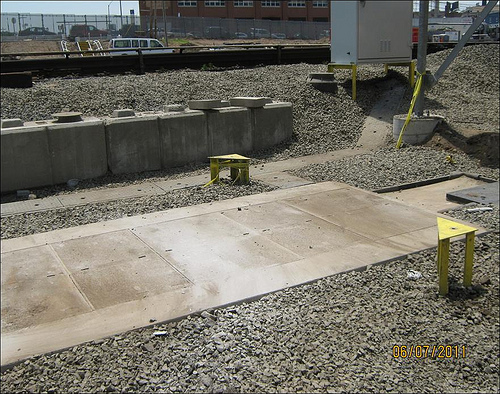If you’re a homeowner, it’s vital you don’t neglect needed foundation repair in San Antonio, even for relatively minor cracks, chips, and other such damage. A foundation in disrepair increases the risk of interior cracks along walls and ceilings, as well as doors and windows that don’t open or close properly or that swing open on their own!
Water also seeps into cracks along a home’s foundation, leading to the risk of mold growth as well as insect and rodent infestation. Seemingly minor damage also becomes worse over time, which is another reason to schedule foundation repair when it’s needed.
If you’re a new homeowner and aren’t sure the signs of foundation damage, or have never worked with a foundation repair contractor in San Antonio before, you might note some key questions about this work. You can then know what to expect from your foundation repair company and ensure your home is protected properly.
Do You Need Foundation Repair for Hairline Cracks?
Hairline cracks in a home’s foundation are normal and don’t always signal the need for repairs. As concrete expands and shrinks or settles in certain areas, and especially as it cures right after pouring, its surface will show cracks and other such minor damage. These small imperfections don’t necessarily compromise the overall density and stability of the foundation.
While small cracks are not necessarily dangerous, note that any crack more than 1/4” wide and especially those that continue to grow and spread might signal the need for foundation repair! Hairline cracks also tend to allow water into the home and are very unsightly. If you’re not sure the overall nature of cracks in your home’s foundation, call a repairperson for a full inspection.
Can a Homeowner Manage Foundation Repair?
A homeowner might purchase a foundation patching kit for hairline cracks, but it’s vital that this material is mixed according to the package directions exactly and applied as directed. Never assume that a thick mixture is better or that you can rush curing time between applications, for example.
Beyond hairline cracks, a homeowner should never attempt foundation repair in San Antonio on their own. In some severe cases, a house may have settled along one side and might actually be leaning or lopsided due to weakness of the foundation in that particular section. The home might then need leveling or other such repair work before foundation repairs.
There are also several different types of foundation repair processes that a contractor might use, depending on the foundation type and material and extent of damage. To ensure the job gets done right, leave any major foundation repair to an expert.
What Are the Signs of Foundation Damage?
Never assume that cracks are the only sign of foundation damage! Remember that the largest part of your home’s foundation is hidden away, either under the home or underground, and damage might occur in areas not readily visible. Note some added signs of foundation damage, beyond cracks:
- Interior doors that don’t open and close easily or properly, or that swing one way or the other on their own.
- Windows that stick or slide closed on their own.
- Gaps behind caulking around windows and doors.
- Cracks in drywall including along the ceiling.
- Interior wallpaper creasing, wrinkling, or outright tearing.
- Gaps between crown molding or baseboards and the adjoining walls.
- Uneven shelves and floors; you might notice items on shelves that suddenly look lopsided, or that a ball or toy car left on the floor doesn’t want to stay in one spot!
- Patios or decks pulling away from the home or suddenly looking uneven, perhaps sinking along the section connected to the house.
- A consistently damp basement.
- Bowing basement walls.
- A sudden pest infestation, especially in the basement.
- Sunken ground around the home’s foundation.
While these issues might be caused by other damage in the home and don’t automatically indicate foundation cracks, it’s good to call a foundation repair company for an inspection if you notice any of these in your house or around your property.
What Is Foundation Underpinning?
Foundation underpinning is different than foundation repair, although this process might repair certain damage to a home’s foundation. Underpinning refers to a strengthening of the home’s foundation; this might be accomplished with an added layer of concrete or the attachment of actual metal beams or pins to the current foundation.
Underpinning a home can correct certain issues and damage, but is also used as a preventative measure for some properties. For example, if you are planning a renovation that would add significant weight to a home’s foundation, such as an added upper story or heavy stone floors, you might consider foundation underpinning. This process ensures your home’s foundation is strong enough to manage that weight easily.
Some properties might need foundation underpinning due to poor soil conditions. For example, overly moist soil tends to expand and put pressure on a home’s foundation, leading to damage. Dry, sandy soil is often not strong enough to support the foundation. Underpinning then helps to prevent future foundation damage in those areas.
Should You Buy a House With Foundation Damage?
San Antonio offers visitors and residents alike a wealth of activities throughout the year. City attractions include SeaWorld, the world-famous Alamo, The Tower of America observation tower, and of course the San Antonio Spurs basketball team. The city also boasts River Walk, a long walkway winding through the city next to a stunning natural river bed, and Marriage Island, a small heart-shaped park said to bring good luck to those who plan their nuptials there!
As with most other cities in Texas, San Antonio offers lots of warm, humid weather during summertime and very mild winters. No doubt this gorgeous weather, along with area attractions, is one reason San Antonio is the 2nd most populated city in Texas and the 7th most populated in the U.S.!
If you’re considering a move to San Antonio, as with any other needed repairs, there is no easy answer as to whether you should buy a house with foundation damage. Note, too, that a property inspector or appraiser doesn’t offer advice about whether or not you should buy a home or even the price of needed repairs; their job is to simply inspect a house and note damage to the structure according to local building codes.
If you’re considering buying a home with foundation damage, you might contact a foundation repair company in San Antonio. They can often inspect the damage and note the cost of potential repairs. You can then decide if that cost is worth the price of the home, if you should adjust your offer accordingly, or move on to another house on the market!








